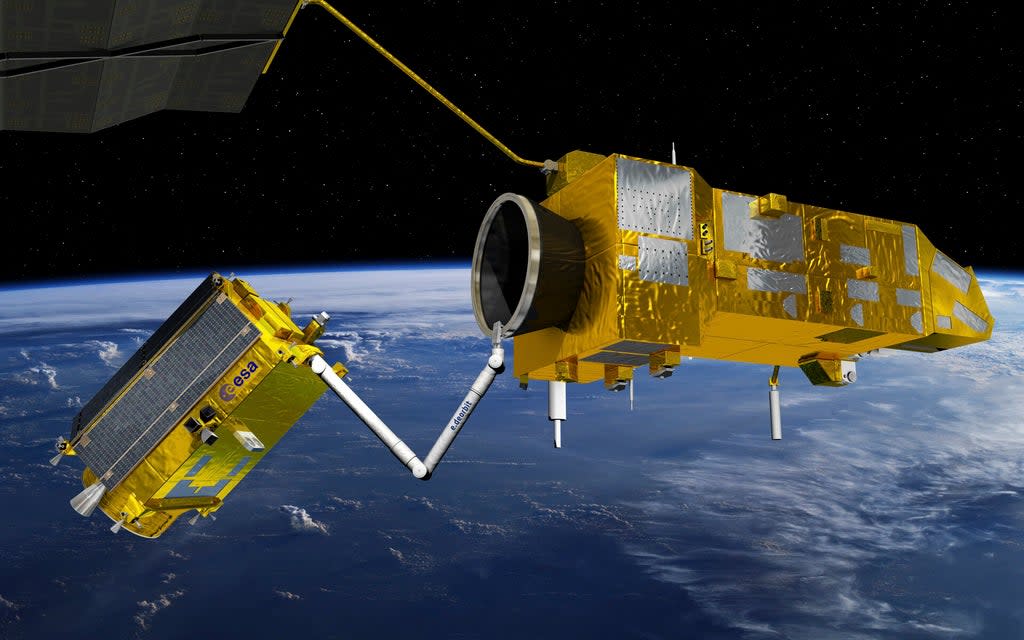‘Swiss army knife’ satellite could bring old craft back to life and stop threats of space debris

The European Space Agency is repurposing a mission to take down a derelict satellite to help stop space debris.
The e.Deorbit mission will now be used to refuel, refurbish, or move satellites already in orbit as part of the Clean Space initiative.
This program was introduced in 2013 to deorbit the Envisat Earth-observing satellite, which suddenly stopped working in 2012.
“Today we have the funding to develop relevant technologies but not to actually remove a defunct satellite,” Luisa Innocenti, heading Clean Space, said in a statement.
“Instead, we have asked industry to make proposals to remove a defunct ESA object while demonstrating in-orbit servicing – the new path to a potentially very valuable business.”
The space agency has tested a variety of technologies for use in the endeavour, including robotic nets, arms, and potentially a harpoon.
There is also a need for precise navigation guidance technology so that the mission can close in and secure potentially moving targets.
The ESA describes the satellite program as a ‘Swiss Army knife’ that would be capable of a number of complex tasks in space, such as refuelling high-end satellites, bringing them new equipment, or attaching itself to them to move them into new orbits.
It could also be used to protect megaconstellations from space debris, as the ESA says failing satellites could threaten the entire constellation around it. A dedicated space servicing vehicle tailored specifically for the role could be a “sheepdog” within megaconstellations.
Right now, there are approximately 228 million pieces of space debris around the globe. A study by Nasa scientist Donald Kessler in 1978 warned that, if two large objects collided, the domino effect caused by the material breaking apart could make terrestrial space launches impossible.
Calls to monitor and regulate space debris increased after Russia conducted an anti-satellite missile test in November 2021. One month after, the International Space Station was forced to rapidly avoid a piece of stray spacecraft that could have collided with it.

